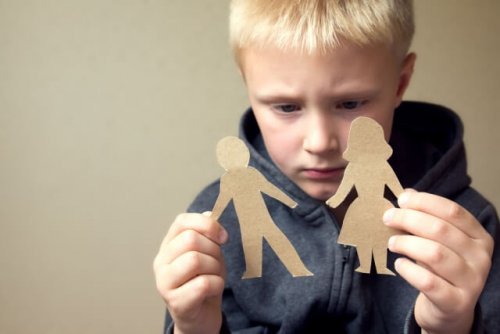Separations, New Additions, and Family Bonds

Crises can greatly affect families, creating or breaking family bonds. Family is all about unions, living together in harmony, and creating loving bonds among its members. However, sometimes, these family bonds can be fragile and bring families or marriages to an end.
New additions to a family, like a new baby or a new in-law, can create or make strong family bonds. This new addition means adjusting the familiar structure to accommodate them. On the other hand, a family disengagement means excluding a member of the family, for any reason the rest of the family members see fit.
A family disengagement can happen for reasons like a health issue, lack of support, or to just cut family ties. In today’s article, we’ll review these concepts to better understand separations, new additions, and family bonds.

Welcoming new additions to the family
The inclusion of a new family member is the start of a new cycle. First, it’s worth noting there’s a difference between consanguinity and in-law families. Consanguinity refers to the blood relationship between family members. An in-law family is just that, family members with no blood ties – like your mother’s friends, who are like aunts to you, for example.
Usually, new family members have no blood ties connecting them, but they take on a legitimate place in this new family. This happens with adoptions, marriages, etc. An inclusion process can be hard on everybody. Above all, seeking professional guidance is a must. These types of situations can be very emotional for everybody.
Breaking structural family bonds
When there’s a persistent estrangement in a family, this is known as a structural disengagement. For example, this is present in problematic or dysfunctional families. As a general rule, these families often experience early abandonment, usually from the parents.
When a child is in a risky situation, and it becomes evident, institutions may decide to remove the child from his or her family. The minor is then placed in a foster home.
In case an adult becomes a danger to their own family, they can also be removed from their family, temporarily or permanently.

Temporary family separations: Runaways
Some teenagers are likely to become runaways. Moreover, this means a temporary family separation in an otherwise stable home. This doesn’t include short-lived escapes, like being gone for a few hours or days.
An escape is characteristic of a child’s intent to emancipate. In other words, this type of emancipation happens after a difficult separation and not through negotiation, as it’s usually the case.
Familiar and spousal separations
In case of a spousal separation or divorce, the family member that left can keep in touch, mainly with their children or, on the contrary, break any family bonds altogether. When this happens, there’s not only a spousal separation, but the family also breaks apart because their parent and spouse left their home.
In reality, a spousal divorce sometimes means divorcing the family too. Similarly, this former family member that excuses themselves, was already absent.

How to approach separations and the breaking of family bonds professionally
Professionals should be careful around this topic, trying not to deepen the crisis and a member’s absence. More than asking why it happens, they need to work out the best possible agreement that deals with the physical and psychological separation.
Crises can greatly affect families, creating or breaking family bonds. Family is all about unions, living together in harmony, and creating loving bonds among its members. However, sometimes, these family bonds can be fragile and bring families or marriages to an end.
New additions to a family, like a new baby or a new in-law, can create or make strong family bonds. This new addition means adjusting the familiar structure to accommodate them. On the other hand, a family disengagement means excluding a member of the family, for any reason the rest of the family members see fit.
A family disengagement can happen for reasons like a health issue, lack of support, or to just cut family ties. In today’s article, we’ll review these concepts to better understand separations, new additions, and family bonds.

Welcoming new additions to the family
The inclusion of a new family member is the start of a new cycle. First, it’s worth noting there’s a difference between consanguinity and in-law families. Consanguinity refers to the blood relationship between family members. An in-law family is just that, family members with no blood ties – like your mother’s friends, who are like aunts to you, for example.
Usually, new family members have no blood ties connecting them, but they take on a legitimate place in this new family. This happens with adoptions, marriages, etc. An inclusion process can be hard on everybody. Above all, seeking professional guidance is a must. These types of situations can be very emotional for everybody.
Breaking structural family bonds
When there’s a persistent estrangement in a family, this is known as a structural disengagement. For example, this is present in problematic or dysfunctional families. As a general rule, these families often experience early abandonment, usually from the parents.
When a child is in a risky situation, and it becomes evident, institutions may decide to remove the child from his or her family. The minor is then placed in a foster home.
In case an adult becomes a danger to their own family, they can also be removed from their family, temporarily or permanently.

Temporary family separations: Runaways
Some teenagers are likely to become runaways. Moreover, this means a temporary family separation in an otherwise stable home. This doesn’t include short-lived escapes, like being gone for a few hours or days.
An escape is characteristic of a child’s intent to emancipate. In other words, this type of emancipation happens after a difficult separation and not through negotiation, as it’s usually the case.
Familiar and spousal separations
In case of a spousal separation or divorce, the family member that left can keep in touch, mainly with their children or, on the contrary, break any family bonds altogether. When this happens, there’s not only a spousal separation, but the family also breaks apart because their parent and spouse left their home.
In reality, a spousal divorce sometimes means divorcing the family too. Similarly, this former family member that excuses themselves, was already absent.

How to approach separations and the breaking of family bonds professionally
Professionals should be careful around this topic, trying not to deepen the crisis and a member’s absence. More than asking why it happens, they need to work out the best possible agreement that deals with the physical and psychological separation.
All cited sources were thoroughly reviewed by our team to ensure their quality, reliability, currency, and validity. The bibliography of this article was considered reliable and of academic or scientific accuracy.
- aragon.es. (2016). Protocolo de actuación para la intervención familiar. Extraído de: https://www.aragon.es/estaticos/GobiernoAragon/Organismos/InstitutoAragonesServiciosSociales/IASS_new/Documentos/infancia/INTERVENCION-FAMILIAR-2016-protocolo.pdf
- ayto-fuenlabrada.es. La familia como contexto de desarrollo humano. Extraído de: http://www.ayto-fuenlabrada.es/recursos/doc/bienestar_social/31293_2342342012122952.pdf
This text is provided for informational purposes only and does not replace consultation with a professional. If in doubt, consult your specialist.








